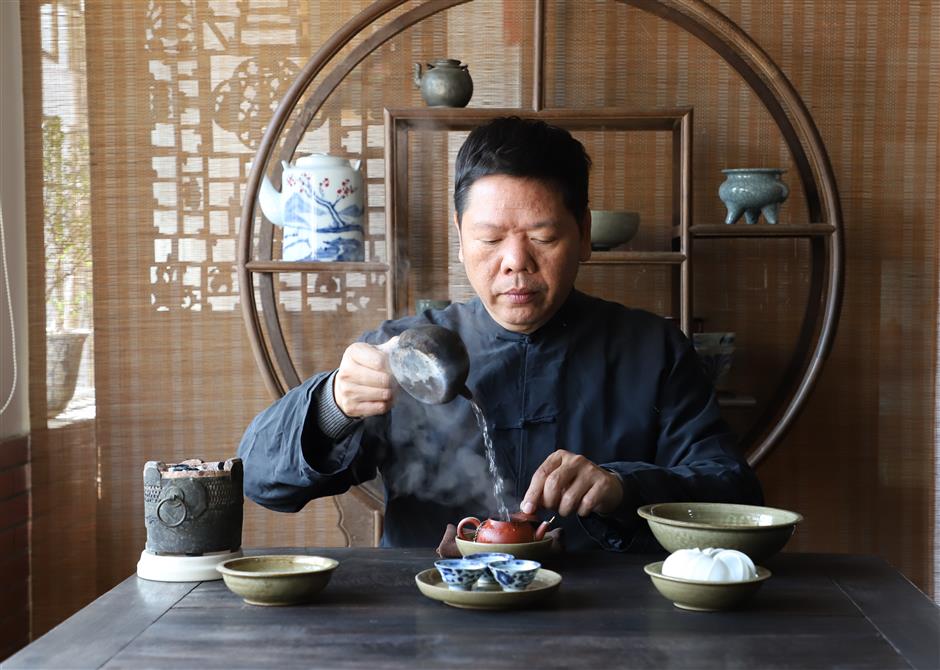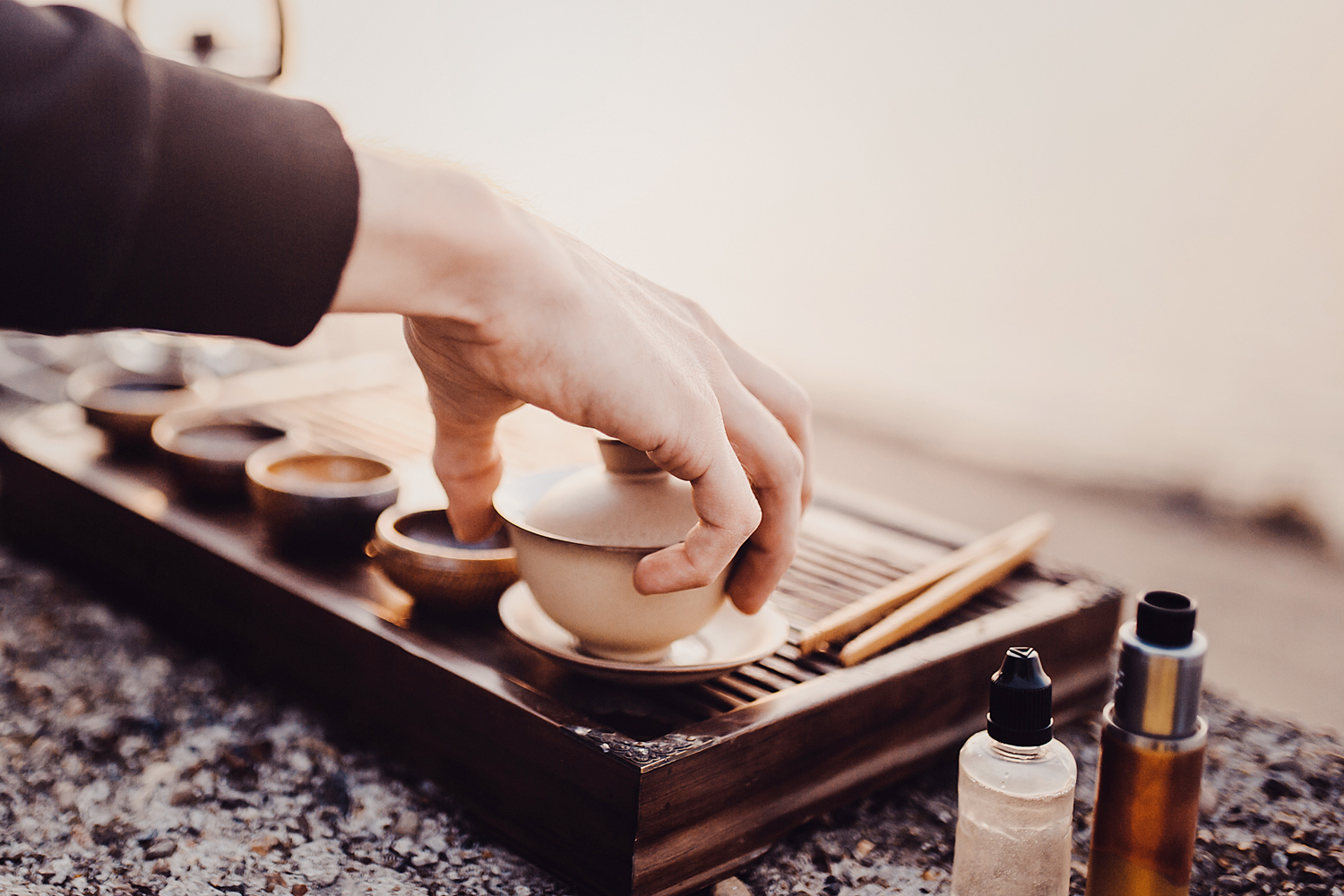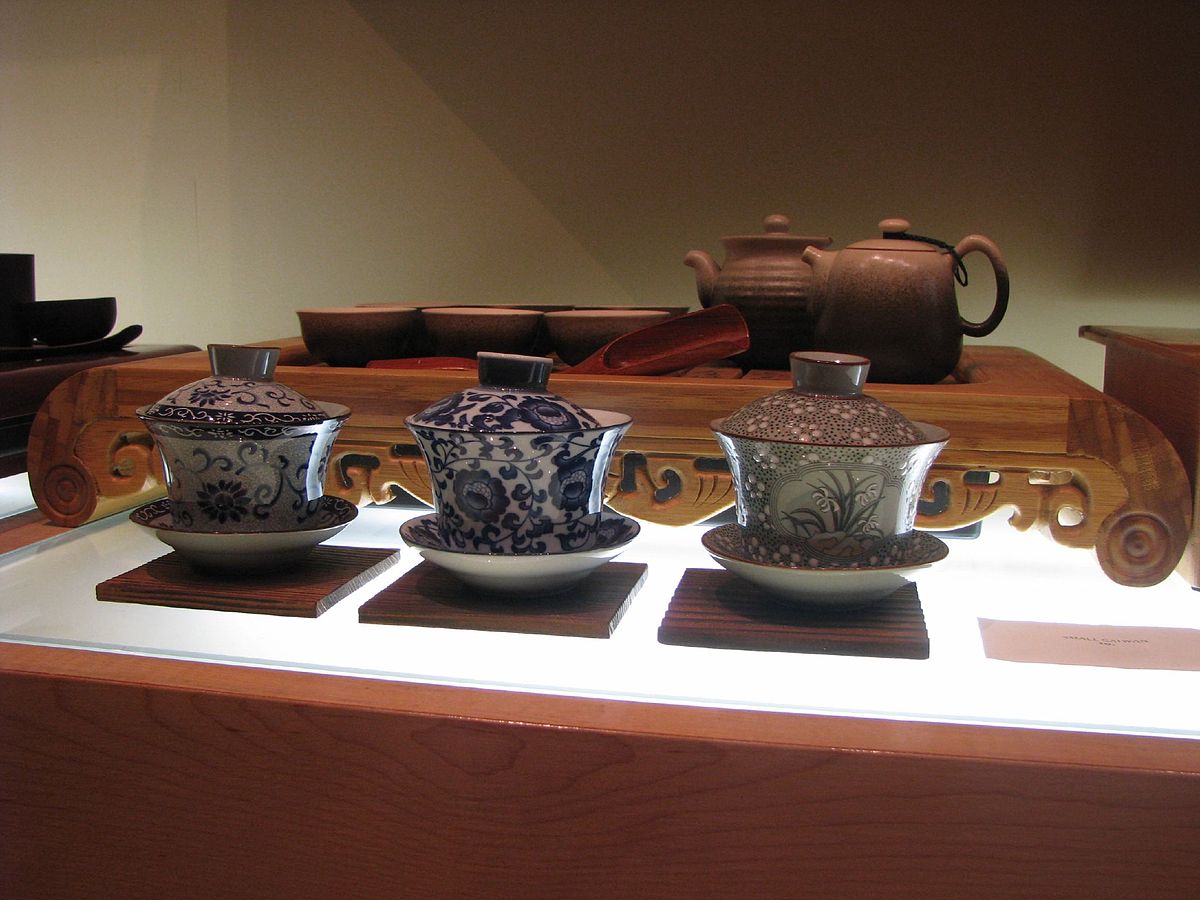The types of Kungfu Tea: what is the difference between Chaoshan Kungfu Tea, Fujian Kungfu Tea and Taiwan Kungfu Tea?
Fujian and Taiwan style Fujian and Taiwan kungfu tea is more "tolerant" because it includes a shared Gongdao cup. So tea is not poured directly from the lid bowl into the teacup, but first into the fair cup, and then into the three tasting cups. This ensures that the tea flows evenly in each cup. Fujian and Taiwanese dishes both have "tasting cups," a much thinner, taller cup that is used only to capture flavor, not to hold wine. This cup is designed to capture the aroma of oolong tea as it has complex aroma layers. The order of serving tea is generally as follows: first make tea in the chicken bay or pottery pot, then pour the tea liquid into the sharing pot in the chicken bay, and then pour it into the fragrant cup from the sharing pot. Then put the cup on the incense cup, and the owner will turn the two cups upside down. When the wine is poured into the cup, the host slowly removes the cup so that the guest can smell the wine from the cup. This is a very interesting process. Unfortunately, however, the use of aromatherapy cups in Fujian is not as popular as in Taiwan, but the rest of the process is the same. Fujian people mainly use kungfu tea style to make internationally famous wuyiyan oolong tea, taiwan people use kungfu tea style to make internationally famous taiwan mountain oolong tea.

Kung fu tea ceremony beyond brewing techniques…Kung fu tea is the core of Chinese tea culture and tea tasting. Tea tasting is an art of appreciation and understanding of beauty, emotion, meaning and reason. Tea requires effort, attention and quiet. I'm also a yoga instructor, and I did yoga + tea this summer, and someone asked me why I put those two elements together. My answer is that it is still because yoga practice mindfulness and after yoga in addition to the pleasure of tasting tea, gongfu tea is also my personal meditation practice, because the brewing process requires a lot of concentration and capture the nuances of constantly changing factors to adjust the next soak and do a better one. Fortunately, I have tea friends who have similar experiences.
Important Notice :
前街咖啡 FrontStreet Coffee has moved to new addredd:
FrontStreet Coffee Address: 315,Donghua East Road,GuangZhou
Tel:020 38364473
- Prev

What kind of tea is Kungfu Tea in Chaoshan? What kind of tea do you usually use? How does Phoenix single fir brew with a lid bowl?
What is kung fu tea? To put it simply, Kungfu Tea is a traditional brewing method unique to Chinese tea culture. Like its name, to brew kung fu tea requires "kung fu", in other words, skill; just like ancient martial arts, it requires a state of mind. Chicken Bay is more commonly used than pottery pots. It originated.
- Next

Introduction to Dancong oolong tea brewing: four guidelines and reasons for correct water injection of tea in cover bowls
The brewing methods and guidelines for covering bowls there are generally four ways to irrigate bowls, depending on what kind of tea we make. The method of pouring tea is one of the most important factors that determine whether the true nature of tea can come out. The central fixed point is used to restore the aroma of highly oxidized tea. When the tea becomes tired, it is generally not used, such as the fifth or sixth bubble.
Related
- What effect does Italian American coffee with filter paper have? Will coffee taste better if it is put on filter paper at the bottom of the powder bowl?
- What is the color difference in coffee beans? What are the characteristics of honey processed coffee beans? Why are the anaerobically treated coffee beans uneven in color?
- How does novice Xiaobai quickly get started and make coffee? Newbies learn to make coffee by hand and share the specific steps and process process!
- Costa tea has a shelf life of 100 years?! Expert: Unable to verify
- It's a huge uproar! American milk addition was rejected by Manner employees?!
- Mocha pot coffee bean recommendations| How fine and how much powder should be used for grinding? What parameter ratios do I need to use to make milk with Mocha pot coffee?
- What are the characteristics of the world's top ten coffee beans treated with Costa Rica honey? How to make black honey kadura from Tarazhu Pilon Processing Plant taste good?
- How to make deep-roasted coffee? What grinding water temperature does authentic Jamaica Blue Mountain No. 1 coffee use to brew it well?
- Selected high-grade rose summer coffee flavor tasting guide Why Panama rose summer has the aroma of flowers and fruits
- What equipment does a novice Xiaobai need to buy to learn to make coffee? Filter cup electronic scale bean grinder manual flushing pot purchase guide

